| PHOTOS: POSITION LIGHT LAST CALL (1524743) | |
|
|
|
| Home > SubChat | |
[ Post a New Response | Return to the Index ]
| (1524743) | |
PHOTOS: POSITION LIGHT LAST CALL |
|
|
Posted by Jersey Mike on Fri Sep 20 22:57:00 2019 After over two years of preparation, Norfolk Southern started to actually cut in its replacement signaling system on the Pittsburgh Line starting in October of 2018. The new system would replace a 1980's era Rule 261 CTC setup with cab signals and, in many cases, position lights, with a largely cab signal based system with signals only at interlockings. Although I had been working as hard as I could to document the legacy signals, where were still a number of locations within a reasonable distance of Harrisburg that I had yet to visit. Therefore I combined a signal road trip with the last day of HARRIS tower's 2018 season hitting three automatic signal locations between CP-CANNON and CP-THOMPSON as well as some of the newly re-signaled locations east of CP-CANNON. You can view the full gallery of photos here or here.We begin at CP-BANKS where a new signal bridge has replaced the old PRR one, which was left in place instead of being immediately cut down for scrap. Waiting on track #1 for a signal was NS C44-9W #9872 with a train of oil tank cars.  In the re-signaled zone, the wayside automatic signals have been replaced by signed Signal Indication Points, where a cab signal code can be expected to change. The SIP at MP 116.0 in Cove, PA was located to the new style three track signal bridge erected by NS around 2005 to replace a PRR vintage signal bridge. Unencumbered by the need to actually place physical wayside signals NS took the opportunity to double the number of signal blocks by reducing block length from 2 miles to 1 mile.  While at Cove a westbound merchandise trail pulled by on the controlled siding track led by NS C44-10W #7673 and NS C44-9W #9258. 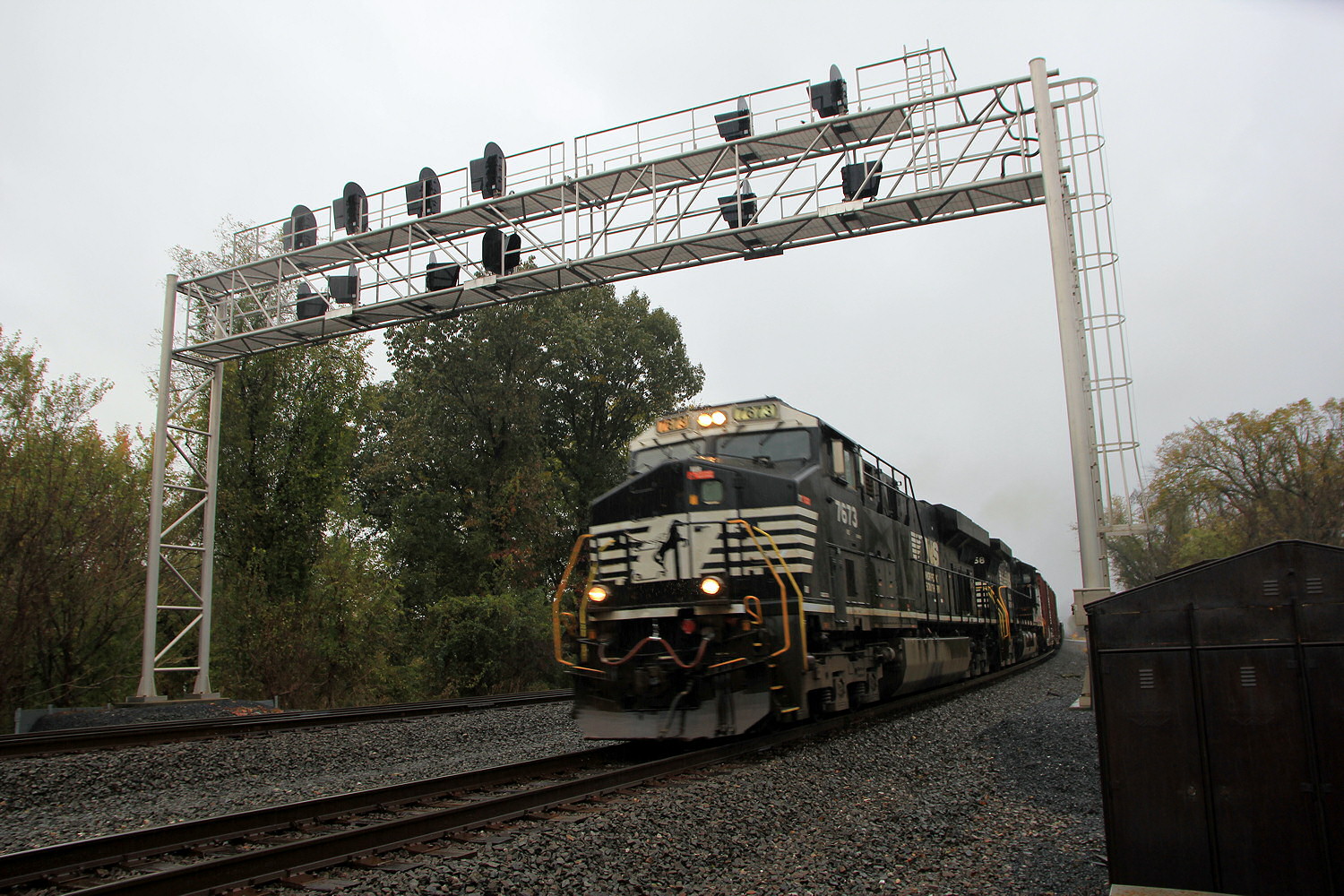 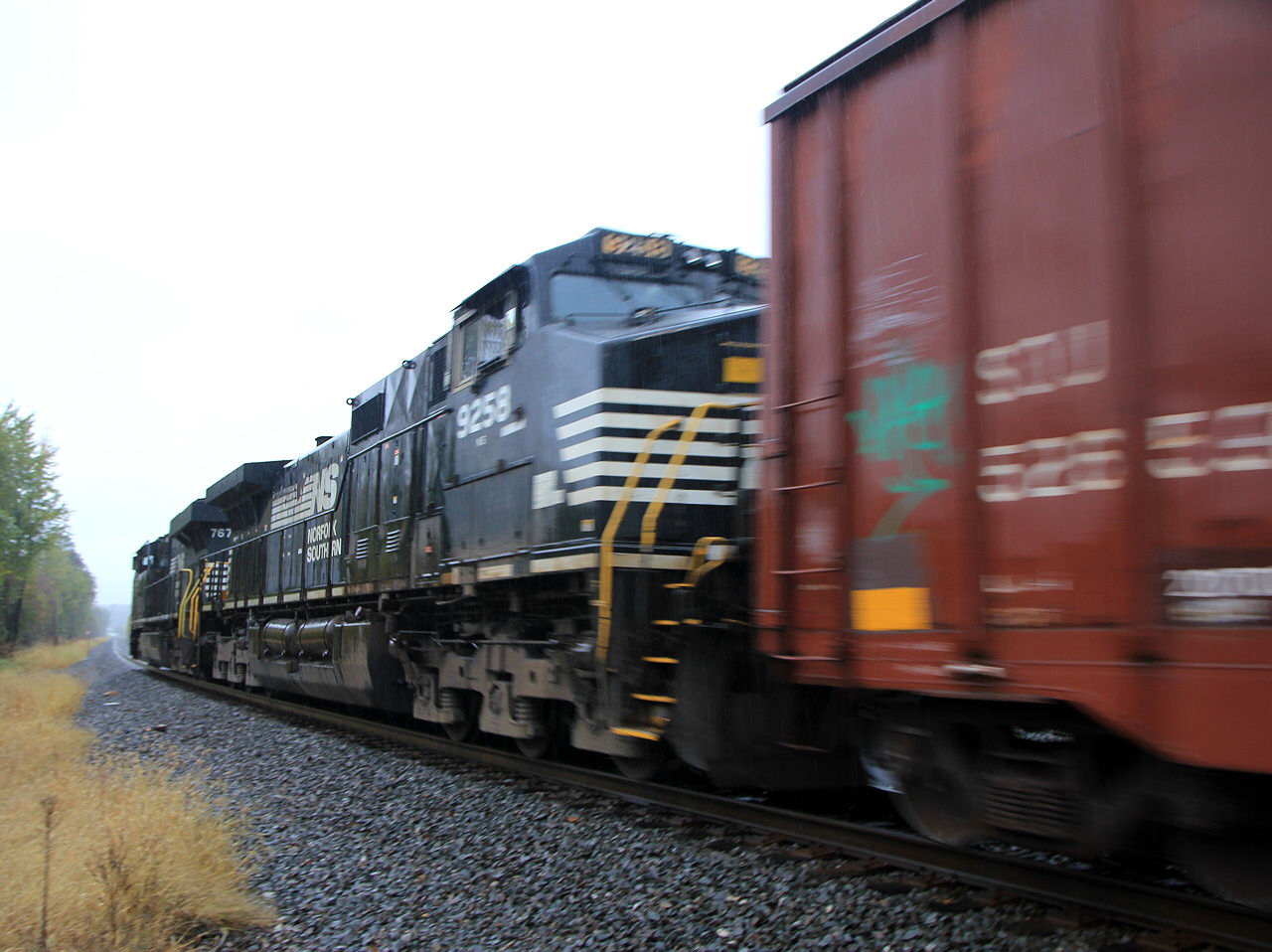 Racing ahead on US 15 I managed to beat the train to CP-CANNON where a Limited Clear indication was displayed on a new color light signal for a westbound movement from the siding to #2 track. Oh, did I mention it was raining? While in route to the Milepost 126 automatic signal, an errant wiper blade ruined an otherwise break photo of an eastbound autorack train led by NS C44-9W's #9526 and #9301. 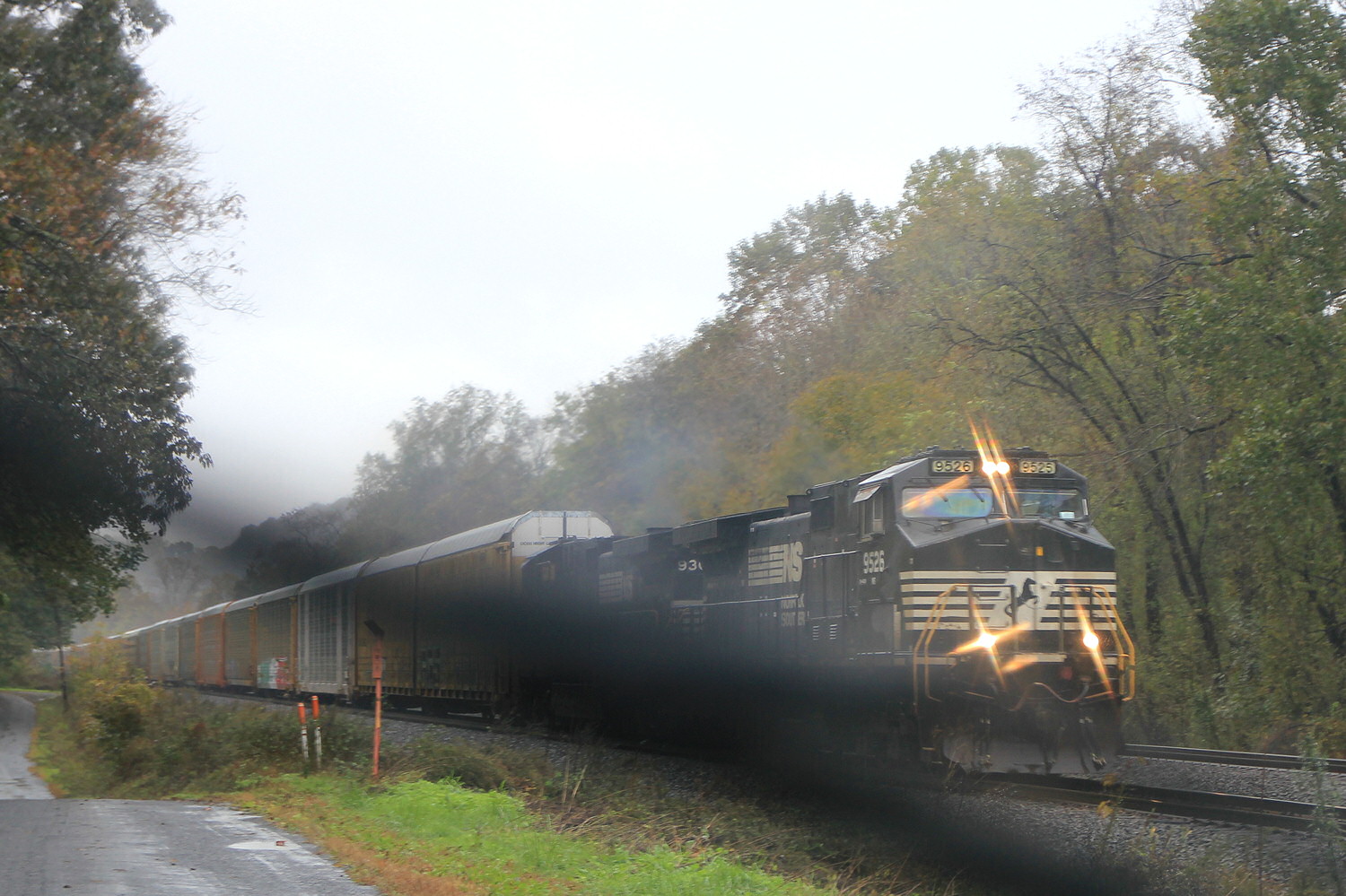 The signal maintainers were out doing the last bit of testing before the next cutover between CP-CANNON and CP-PORT resulting in the approach lit block signals to exhibit some rather odd behavior. Even 1990's Conrail vintage signals are getting the axe. This pair located within milepost 128 was installed around 1994 after an older model PRR signal bridge developed some sort of structural problem. When the old PRR Middle Division was re-signaled in the 1980's (and reduced from 3 tracks to 2), Eed of Life signal brides were replaced by position light masts. A decade later crew preferences for signal uniformity and visibility were already taking a back seat to the bean counters and both position lights and searchlights were out in favor of target style color lights. It would be Conrail itself that started the trend of removing wayside signals entirely with NS picking up the torch and running with the concept in the second decade of the 20th century.  Passing through Newport I noticed a PTC test RV with attached antenna supporting the maintainers for the planned signal cutover that was scheduled for the following day (Sunday). 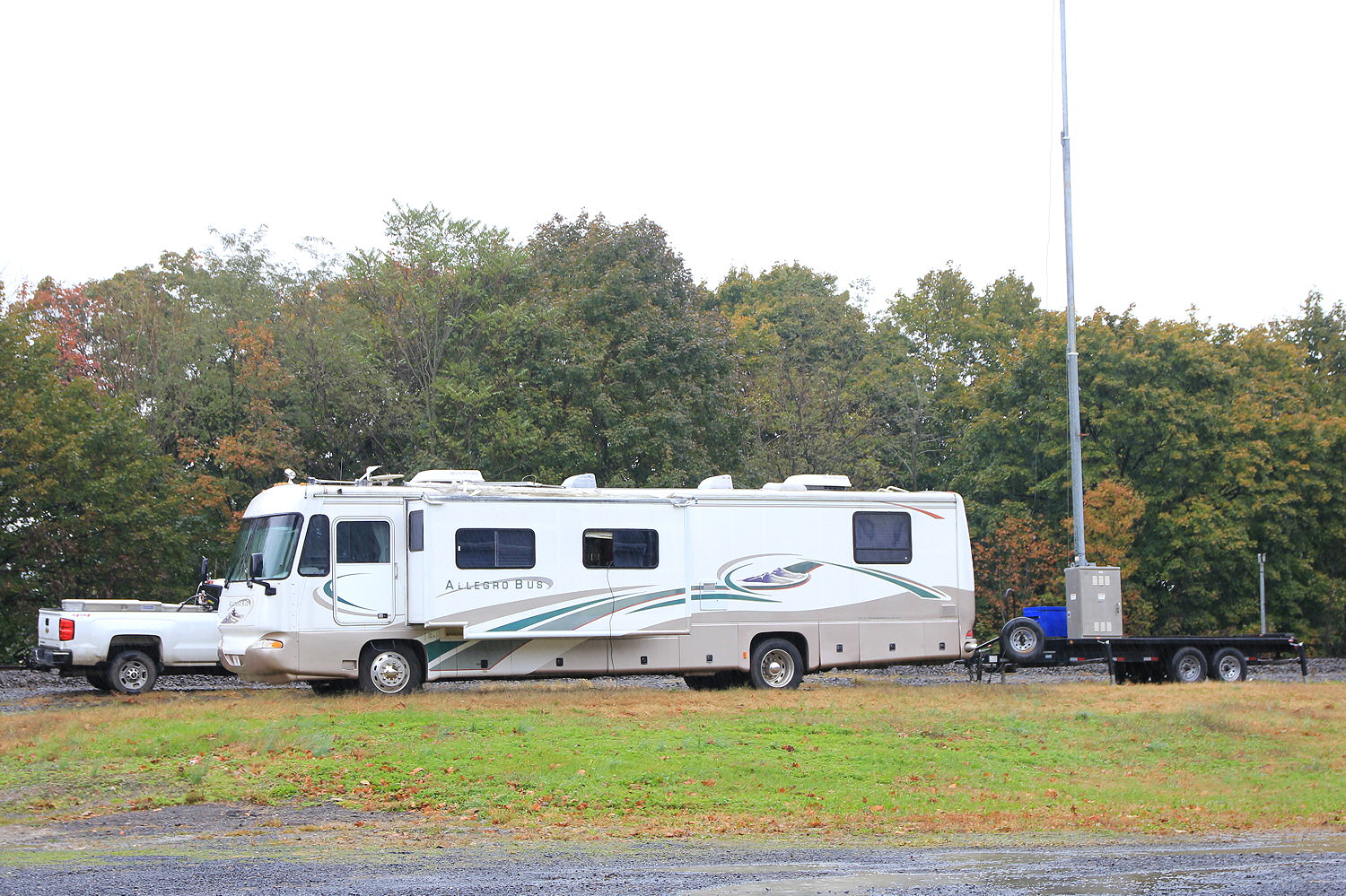 Here we see AC44C6M rebuild #4027 leading an elderly C40-8W past the milepost 137 position light mast automatic signals near Millersville, PA.  Shortly thereafter Amtrak Train #42 came on the scene led by P42DC #85.  With the signal work complete I drove the 30 or so miles back to HARRIS tower in downtown Harrisburg, PA. I arrived in time to find NS GP38-2 #5125 hauling one 8 and on 12 axle flatcar, each with covered loads. I suspect this might be some sort of nuclear flask shipment given the lack of any labels on the cars.  The HARRIS tower Model 14 machine was back in operation after its new paint job and general refurbishment, but a number of components had yet to be re-installed. 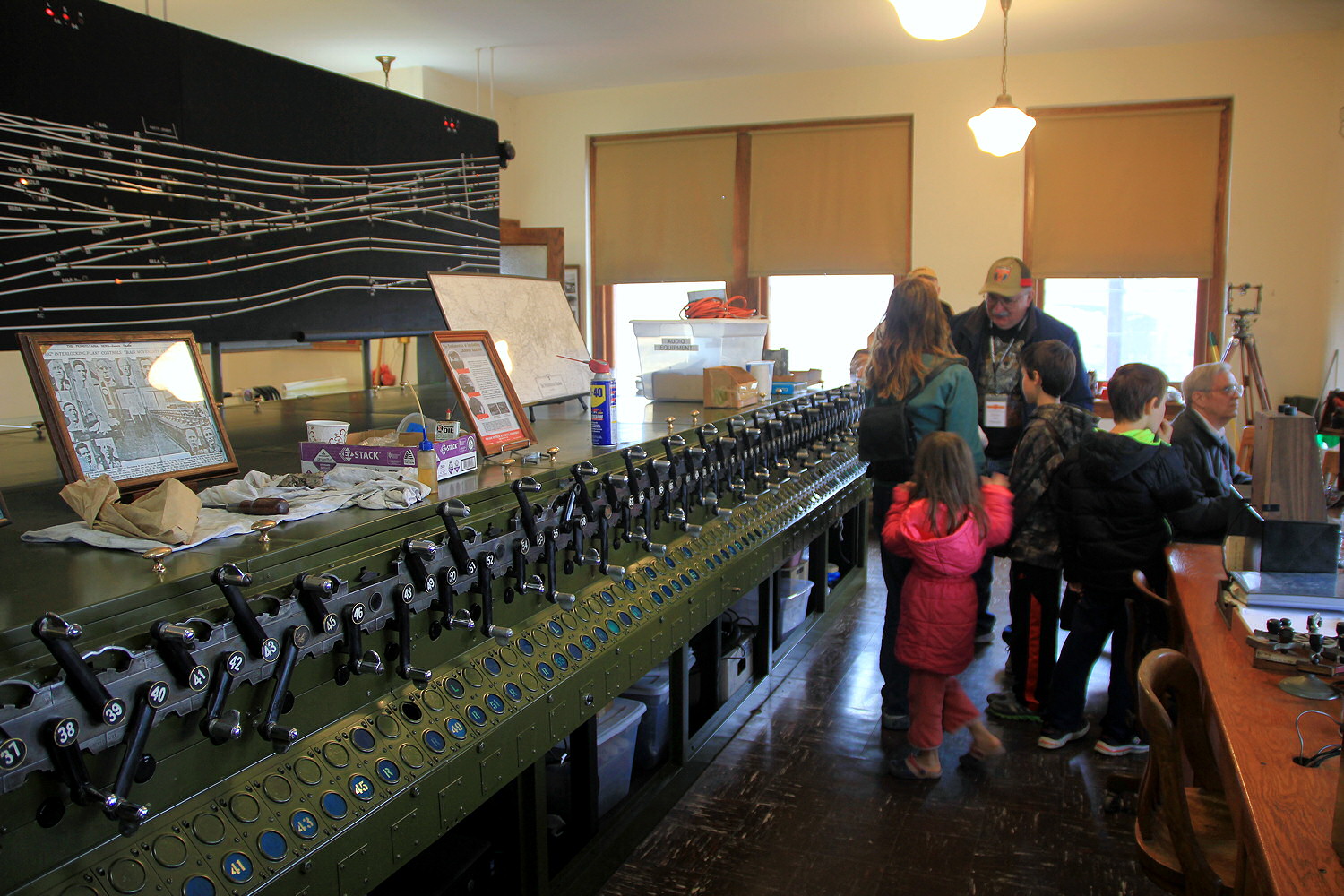 Outside an empty eastbound train of autoracks passed by the tower with NS ES44AC class leader #8000 and C44-10 #7634. 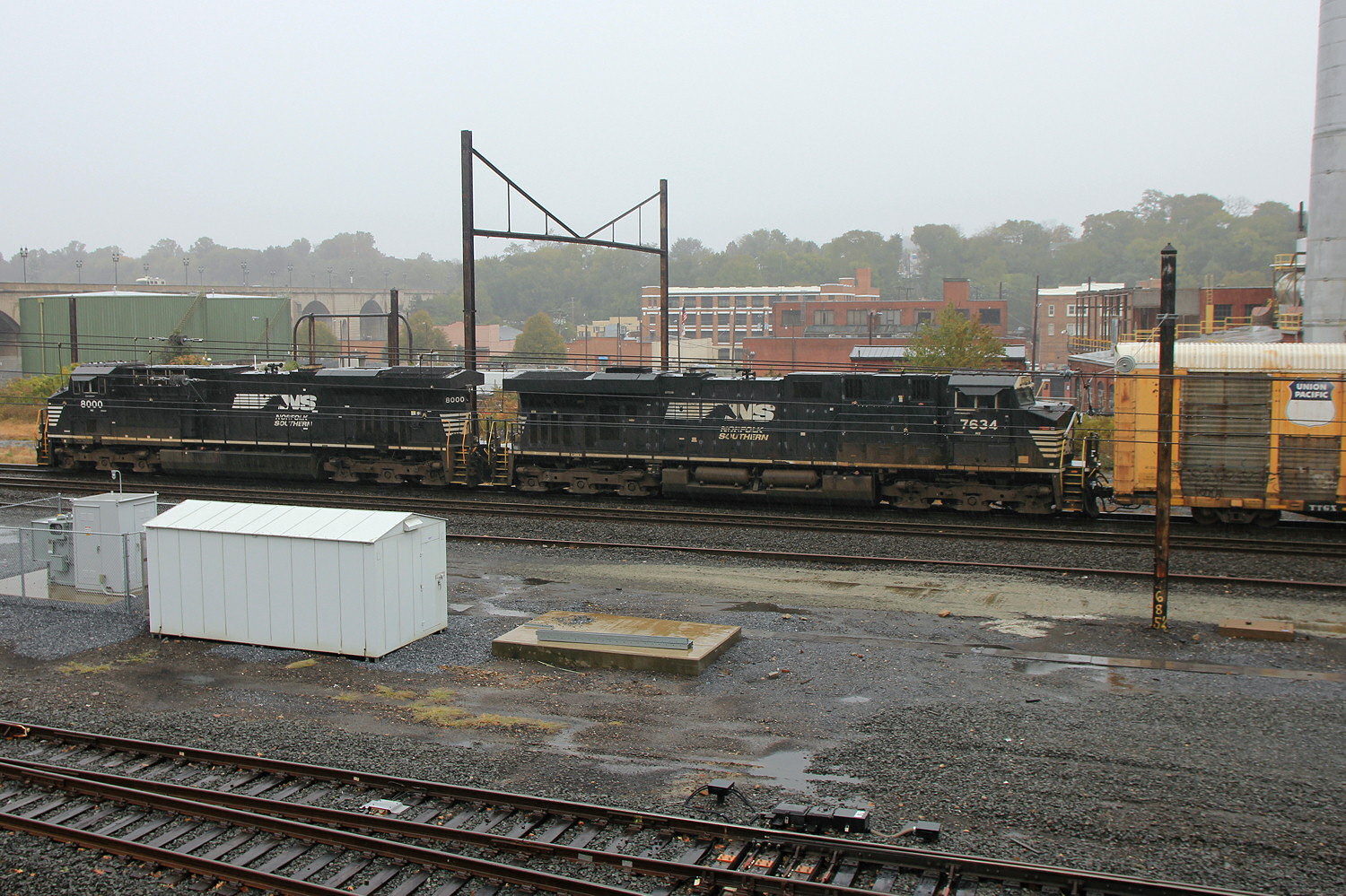 Next by the tower was a loaded eastbound autorack train with NS C44-9W's #9301 and #9526.  Finally an ostensibly empty westbound oil train led by five(!) NS C44-9W's rolled past with the first four operating elephant style. The units, in order of appearance, were #9672, #9359, #9104, #8972 and #9288.   Well that's it for the 2018 HARRIS tower season and Middle Division position lights in general. Farewell, it was a fun ride. Next week I'll be back with an expedition to document 90's Conrail signaling on the Morrisville Line. |
|
| (1524758) | |
Re: PHOTOS: POSITION LIGHT LAST CALL |
|
|
Posted by ChicagoMotorman on Sat Sep 21 09:17:00 2019, in response to PHOTOS: POSITION LIGHT LAST CALL, posted by Jersey Mike on Fri Sep 20 22:57:00 2019. very nice |
|
| (1524759) | |
Re: PHOTOS: POSITION LIGHT LAST CALL |
|
|
Posted by kp5308 on Sat Sep 21 09:42:38 2019, in response to PHOTOS: POSITION LIGHT LAST CALL, posted by Jersey Mike on Fri Sep 20 22:57:00 2019. Nice shots & narrative Mike. The "nuclear" cars are a somewhat regular movement of hot steel to Bethlehem PA. The shrouds are actually insulated covers. I see them from time to time here in Blandon, usually on the head end of a stack train that sets off cars for Lehigh Valley Rail Management's transload facility. |
|
| (Sponsored) |
iPhone 6 (4.7 Inch) Premium PU Leather Wallet Case - Red w/ Floral Interior - by Notch-It |
| (1524761) | |
Re: PHOTOS: POSITION LIGHT LAST CALL |
|
|
Posted by George Foelschow on Sat Sep 21 10:11:34 2019, in response to PHOTOS: POSITION LIGHT LAST CALL, posted by Jersey Mike on Fri Sep 20 22:57:00 2019. I appreciate your interest in and study of railroad signals. I would imagine that wayside signals serve as backup to cab signals. Are cab signals driven by track circuits and/or are satellites ever employed to determine a locomotive's physical position? I can see the wisdom of using duplicate systems at interlocking plants. |
|
| (1524771) | |
Re: PHOTOS: POSITION LIGHT LAST CALL |
|
|
Posted by https://salaamallah.com/ on Sat Sep 21 14:13:34 2019, in response to PHOTOS: POSITION LIGHT LAST CALL, posted by Jersey Mike on Fri Sep 20 22:57:00 2019. WOWEXCELLENT PHOTOS NICE VIDEO |
|
| (1524822) | |
Re: PHOTOS: POSITION LIGHT LAST CALL |
|
|
Posted by Orange Blossom Special on Sun Sep 22 12:02:25 2019, in response to PHOTOS: POSITION LIGHT LAST CALL, posted by Jersey Mike on Fri Sep 20 22:57:00 2019. so many missing tracks.... |
|
| (1524903) | |
Re: PHOTOS: POSITION LIGHT LAST CALL |
|
|
Posted by randyo on Mon Sep 23 02:13:29 2019, in response to PHOTOS: POSITION LIGHT LAST CALL, posted by Jersey Mike on Fri Sep 20 22:57:00 2019. One of the things I noticed in photos of interlocking machines on other transit systems is that both the switch and signal levers are painted the same color, black. On all 3 divisions of the NYCTS it was common practice for switch levers to be painted black, signal levers to be painted red and traffic levers painted blue with spare levers painted yellow. Since all 3 divisions of the NYCTS followed that pattern, I had always assumed that it was common practice in the RR industry. Does anyone out there have any more detailed info about this? |
|
| (1524930) | |
Re: PHOTOS: POSITION LIGHT LAST CALL |
|
|
Posted by Broadway Lion on Mon Sep 23 08:23:57 2019, in response to Re: PHOTOS: POSITION LIGHT LAST CALL, posted by randyo on Mon Sep 23 02:13:29 2019. GRS practice puts the signal levers at either end of the lever row. Trains transversing the modelboard from let to right has ALL of their signal leverson the left. Trains transversing from right to left have all of their signal levers on the right.The switch levers are in the middle from left to right following the numbers on the model board. Signals are painted RED, Switches were black. In the days of the armstrong levers the locks were painted blue. On railroad of lion, non-pax switch levers are painted yellow. A revenue train may not be moved onto those tracks ie pockets etc. ROARING |
|
| (1524978) | |
Re: PHOTOS: POSITION LIGHT LAST CALL |
|
|
Posted by randyo on Mon Sep 23 15:50:24 2019, in response to Re: PHOTOS: POSITION LIGHT LAST CALL, posted by Broadway Lion on Mon Sep 23 08:23:57 2019. On the Armstrong (Saxeby and Farmer) machine I worked in Canarsie, the lock levers were painted white. I know about the GRS pattern of signal vs switch lever placement, and about the color of the signal and switch levers on the NYCTS, but the photographs of the interlocking machines on non NYCTS properties seem to indicate the color pattern was not universal. |
|
| (1525032) | |
Re: PHOTOS: POSITION LIGHT LAST CALL |
|
|
Posted by Jersey Mike on Tue Sep 24 08:40:43 2019, in response to Re: PHOTOS: POSITION LIGHT LAST CALL, posted by kp5308 on Sat Sep 21 09:42:38 2019. Interesting, but who the heck is still making steel in Bethlehem? |
|
| (1525033) | |
Re: PHOTOS: POSITION LIGHT LAST CALL |
|
|
Posted by Jersey Mike on Tue Sep 24 08:46:57 2019, in response to Re: PHOTOS: POSITION LIGHT LAST CALL, posted by George Foelschow on Sat Sep 21 10:11:34 2019. Cab signals use coded track circuits and have been in operation since the 1930's. Use of cab signals without fixed wayside signals was piloted by several classic railroads before being embraced by Conrail and now NS. It is also widely present on transit systems.Wayside signals provide crews with a bit more warning and allow for seamless operation in case of cab signal failure. Those are generally seen as "nice to haves", but not anything really critical. In this case NS was able to double the number of blocks to increase capacity without the cost or maintenance load of physical signals. |
|
| (1525035) | |
Re: PHOTOS: POSITION LIGHT LAST CALL |
|
|
Posted by Jersey Mike on Tue Sep 24 08:49:53 2019, in response to Re: PHOTOS: POSITION LIGHT LAST CALL, posted by randyo on Mon Sep 23 02:13:29 2019. It was based on the preference of the purchasing railroad. The PRR would sometimes use black and yellow for switches and signals, but eventually just went with a uniform color.The typical paint scheme across the industry was black red and blue as you described. |
|
| (1525036) | |
Re: PHOTOS: POSITION LIGHT LAST CALL |
|
|
Posted by Jersey Mike on Tue Sep 24 08:51:30 2019, in response to Re: PHOTOS: POSITION LIGHT LAST CALL, posted by Broadway Lion on Mon Sep 23 08:23:57 2019. Placement of signal levers on the end was common, but not really a standard, especially in more complicated interlockings like Grand Central. |
|